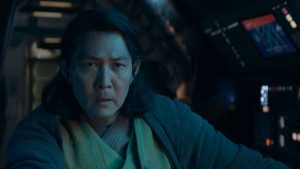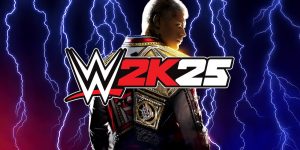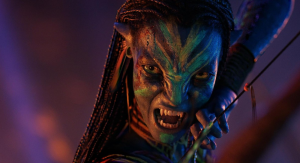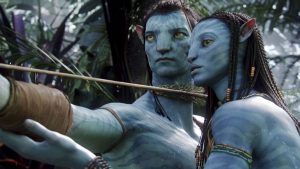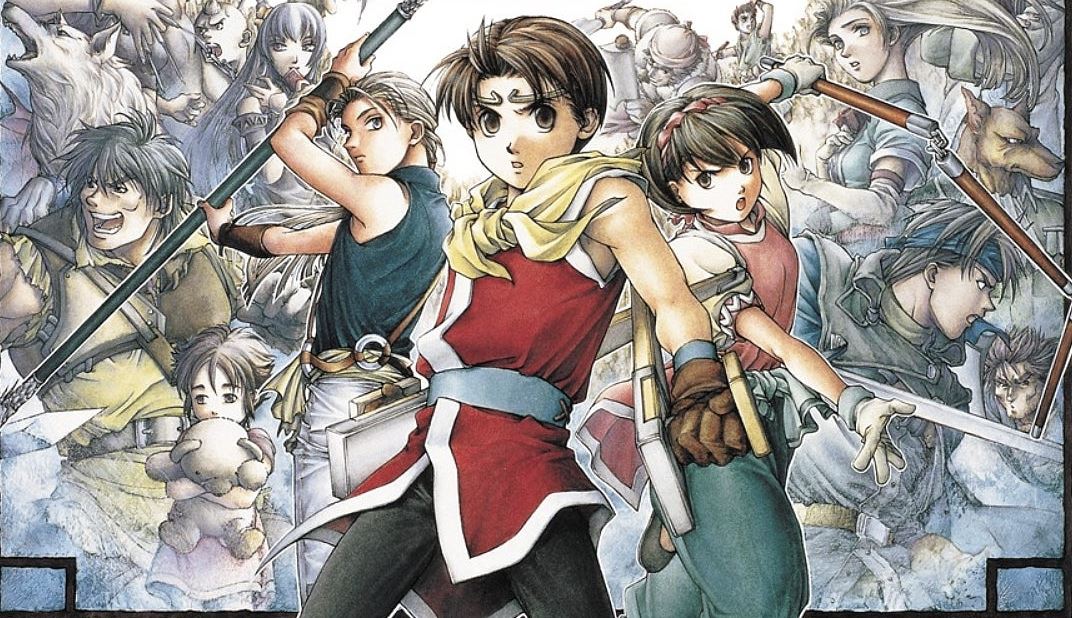
JRPG fans are a starving lot, stuck in an era of replaying their golden oldies and praying the latest indie game on Steam at least partially sticks the landing. Even recommending the classics can be difficult. Many of the best games have never received a revival port, or, worse, the revival is still up in the air. That’s the fate of the Suikoden franchise, whose first two games received a Japan-only PSP port in 2006 and which was originally meant to be released on modern consoles last year.
It’s another indignity for a series whose Western introduction in 1996 was festooned with an infamously bad replacement cover because Konami thought Westerners didn’t like manga. Or something.
Yet the turn-based franchise, which consistently featured a cast of over 100 characters to collect and a lively if simple settlement-building system, remains beloved to those hardcore RPG devotees that can find it. Continually hampered by shinier games and barely moderate advertising, Suikoden couldn’t move past the PS2 era. Suikoden V was the final mainline game in 2006. Burdened by low sales and a sub-optimal console experience, it would be forgotten by everyone but its most loyal fans.
Then, in 2020, original series creator and director Yoshitaka Murayama opened a Kickstarter for a new game that was boldly presented as a new Suikoden-style game… just with the serial numbers filed off. The result of that announcement? Eiyuden Chronicles became the third biggest video game Kickstarter to date. That game is now in the hands of the players that wished it into being. That’s a big achievement. Here’s why the return of Suikoden, in any form, matters.
Suikoden Is Older Than Dragon Ball (Sort Of)
Suikoden’s story and general plot beats borrow from a classic Chinese novel called Water Margin. If your grandparents were into Pearl S. Buck (like everyone from that generation was), you might know it as the translated version All Men Are Brothers. Don’t let your mom throw it away; it’s fairly rare now.
It’s a drama about a band of outlaws bound together by destiny. It’s also a story that’s centuries older than Journey To The West: best known as Dragon Ball’s inspiration. Like Journey to the West, though, it’s considered one of the “Great Novels” of China (an honor that also includes the Romance of the Three Kingdoms).
It’s difficult to quickly boil down why Water Margin is such a terrific basis for a sprawling RPG series, but in short, each of its 108 characters is also entwined with the Taoist representation of an unearthly spirit or earthly fiend. It puts them not only at odds with the corrupted government, but takes them individually on a journey of discovery, or redemption, as needed. Think of it like Chaucer’s Canterbury Tales, but huge.
It’s that basic theme that runs through each of the Suikoden games. Each major character you meet is a Star of Destiny, brought together under the banner of your main character and is ready to stand against an oppressive foe. Along with it are complications both personal and political; more than once you’ll find a former friend among your foes, and it will matter if you try to find a way to redeem them and restore their more honorable destiny.
Old School? More Like Cool School
To tell these stories, from the start and ever onward, Suikoden uses a standard turn-based JRPG system that’s flavored with a couple of tweaks that underline its concept of destiny. Some characters that you recruit are ‘united’ in ways that create unique combos in battle, based on things like shared talents for archery. Or they’re battle brothers. Or they’re all elves.
These characters can often be individually equipped with runes as the bulk of its magic system, though some are story-based and granted only to certain characters. In that way, the runes build on the theme of destiny, and certain runes are more burden than a gift. It also builds up a strategic layer that combines your affinity for these characters and your ability to kit them out in a way that predates similar mix-and-match set-ups, like the Orbal Arts system in Falcom’s Trails series.
All of that is brought to life by vivid art, and the first two games are masterclasses in how well pixels can bring characters and combat to life. Later games add extra glitz to the already showy displays of united attacks and runic spells, but it’s those unique designs that keep our eyes on the show.
More Characters Than a Tarantino Movie
To give players all those tactical combat options, and to help build up a rebel settlement, each Suikoden game offers oodles of characters to collect (108 in all) in each game, in deference to those outlaw heroes of the Water Margin. It’s like Pokemon, only, y’know, with an actual military. And while not every recruitable character can be brought into combat, most can. The rest support you from your base of operations, unlocking new resources. They range from the usual; shops, blacksmiths, etc, to the more unique: utilities like an elevator, new ways of customizing your base, or librarians.
Each new recruit adds liveliness to your fortress, making even the most troublesome to gather feel valuable, and it’s a feeling that extends across the entire franchise. You feel like you’re actually building something here, and that hopefulness and desire to gather everyone you can is key to unlocking each game’s true ending.
It helps that every person you can gather, no matter how small their role, feels unique. It’s easy to pick favorites, sometimes despite the desire to min/max your party for the final hours of the game. Beast races, like the kobolds of Suikoden I and the Power Rangers-lookin’ squirrel squad of Suikoden II are hard to pass up, due to their sheer cuteness. The squirrels even have a lethal joke ability that can one-hit-kill anything with a little luck — literally, anything, even if it’s normally immune to one-hit kills.
There are even a couple of recurring characters, although to delve too far into that ever-enticing mystery is to invite spoilers for new fans, including major plot points for some of the games. But as I said, not every special Rune in the franchise is a gift. Sometimes the burden means your job is rarely ever done.
When it comes to oodles of characters where you’re guaranteed to find someone you’ll love, the Suikoden games are SaGa Frontier on steroids or a JRPG version of Disgaea. There’s just too much love put into the details, and that’s just one reason fans keep coming back to these games.
There’s Little Like It: Except Eiyuden Chronicles
That unique love and flavor is probably the key to why the Eiyuden Chronicles Kickstarter hit the stratosphere. Franchise fans saw in those early documents the closest thing we’ll ever have to a Suikoden VI, and new JRPG fans who haven’t had the chance to play these classics knew this was going to be a game to watch out for. It promised all those unique characters to love, a world in political and military turmoil, and the same close-to-our-hearts building of a community of outcasts.
That’s why it’s a tragedy that Yoshitaka Murayama died this past February, at the age of 55. Dedicating the majority of his career to Suikoden and its way of cherishing every part of the team, from leader to support, and putting his heart and soul into Eiyuden Chronicles, it’s a tragedy that he won’t get to see his grand finale reach the hands of the people that believed in the same thing he did. That a grand journey needs a grand scale, and every hand that helps you along the way matters.
Today, Eiyuden Chronicles is in the wild, and the promise it offered have been kept. From duels and massive siege battles impacted by your recruitment numbers to random encounters and hard saving your game at inns and checkpoints, it’s a return to the ‘90s, quirks and all. To make the tie to its heritage even more blatant, there’s an easter egg when it comes time to naming Eiyuden’s hidden fortress because one of the options you can pick is Mount Liang. That’s where the outcasts of Water Margin came to call home.
Some of those deliberately old-school choices make hard terrain for the modern gamer, and a few early release bugs temper the interest of those who didn’t grow up with Suikoden’s “take-it-or-leave-it style.” Its plot is also a little closer to the sparse first Suikoden in pace and tone, which was foreshadowed by Murayama’s almost entirely environmental scenario work for the recently remastered The Legend of Legacy. Still, many fans – including me – are enjoying pretty much exactly what we expected to get.
As for Suikoden itself, we can only hope that the attention Eiyuden Chronicles has shined on the old-school JRPG pushes Konami over the finish line in remastering I & II for a new era of fans. No firm reason was given for the delay of the new package, announced in Fall 2023, except that it needed more time to be as good as its fans deserve. No other update has been given since, and fans, worried about Konami’s penchant to abandon beloved franchises — Suikoden’s death and rebirth is paralleled by Konami’s neglect of Castlevania, followed the equally successful Bloodstained revival, also via Kickstarter — continue to watch, worriedly, for any sign of the remaster’s final fate.
Until then, dig out your PlayStation and its successor, and borrow whatever game you can find. Or, well, whatever method you choose. We won’t tell, so long as the net result is you getting to try out some of the very best games to never hit blockbuster status. Go in order, if you can, or if you can only pick one, pick Suikoden II. You’re about to experience something special.
The post Suikoden: The Nearly Forgotten RPG Franchise That Always Deserved More appeared first on Den of Geek.

